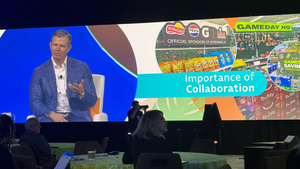Safeway Expands Usage of Reusable Shipping Containers to ProduceSafeway Expands Usage of Reusable Shipping Containers to Produce
January 1, 2018
Safeway furthered its commitment to sustainability and the environment by announcing that it has transitioned to using reusable product containers (RPCs), rather than corrugated boxes, to ship many types of produce from the farm fields, through the distribution channel and to final store destination. This transition eliminated the use of over 17 million pounds of corrugated boxes. Safeway, which has introduced a broad range of successful sustainability practices across its operations, has used RPCs for decades on many of its consumer brand categories, including bread, milk and soda. The company began testing RPCs in its distribution system for fresh wet-pack produce — fruits and vegetables kept on ice until they reach the store — in early 2010. Making the transition for produce was a more complicated process than for other products because, to make it effective and decrease cardboard usage, Safeway's distributors and grower partners also had to commit to the switch. The transition continued throughout 2011. Today, many types of produce travel from the field, to the distributor, to Safeway's product distribution centers and to the final store location in RPCs. The company's major supplier of RPCs, IFCO Systems, says Safeway's implementation of RPC usage to decrease waste was the fastest and most aggressive program roll-out to date. Safeway Vice President of Transportation Tom Nartker said employing environmentally friendly methods of product distribution is part of Safeway's overall commitment to sustainable business practices. "This expansion into produce is a natural extension of best practices in logistics," said Mr. Nartker. "Safeway will continue to look for opportunities to expand the usage of RPCs into additional categories to have an even greater positive environmental impact." The use of reusable, sustainable containers not only keeps non-recyclable shipping containers out of the supply chain, but it also has an even greater positive environmental impact. RPCs can be stacked higher and more densely than traditional boxes, allowing for more efficient shipping and requiring fewer trips to transport the same amount of product. This, in turn, decreases trucking emissions and traffic volume. To date, the positive environmental impacts are as follows:
Eliminated the use of over 17 million pounds of corrugated boxes
Avoided the harvesting of approximately 114,000 trees
Reduced emissions of 37,518 metric tons of greenhouse gas emissions (CO2E)from the environment, equivalent to removing 6,872 passenger cars off the road
About the Author
You May Also Like




